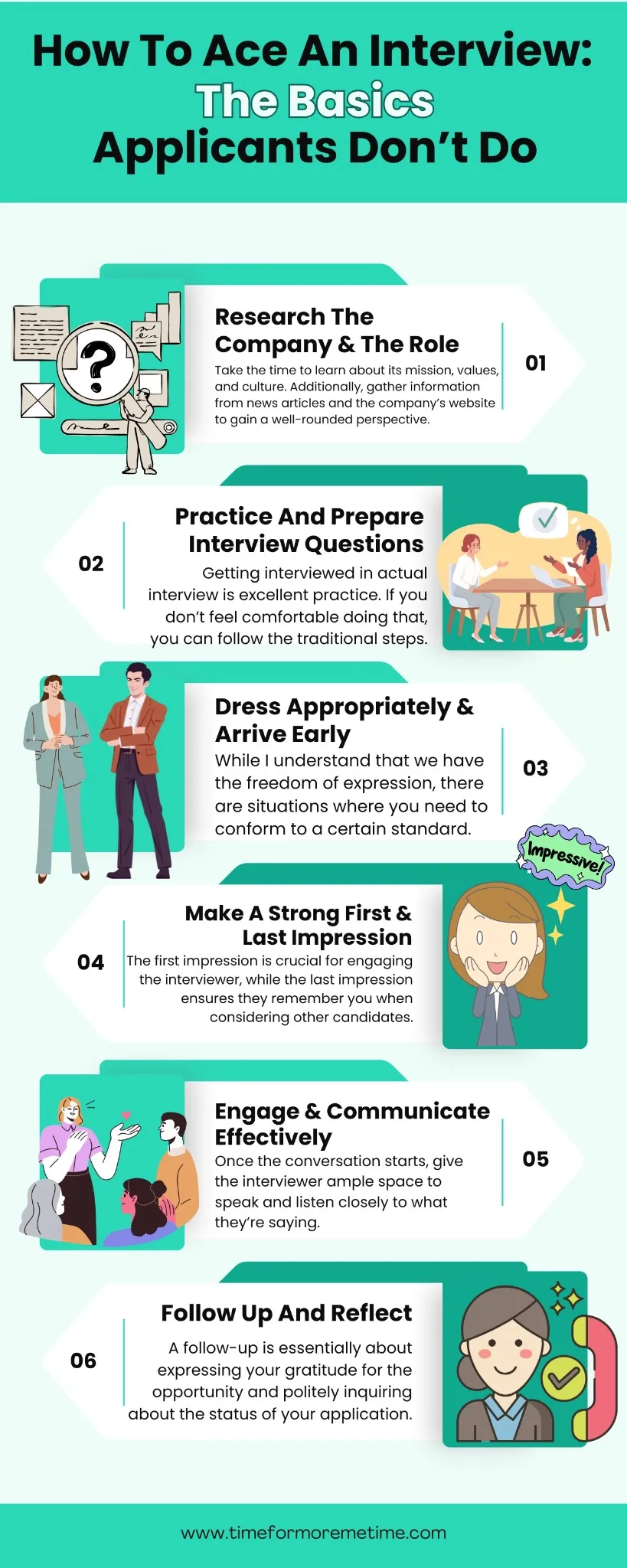
In a recent post, I explored the job hunting process. Today, we will delve deeper into a vital aspect of that journey: how to ace an interview.
Successfully navigating an interview is crucial for boosting your chances of securing employment. In many cases, showcasing outstanding performance during an interview can give you a significant competitive edge, even if other candidates meet or exceed the employer’s qualifications.
While my previous discussion focused on the broader steps of job hunting, I didn’t provide specific strategies for excelling in an interview setting. Therefore, I am excited to share key insights and practical tips to help you stand out.
Without further ado, let’s get started!
1. Research The Company And The Role
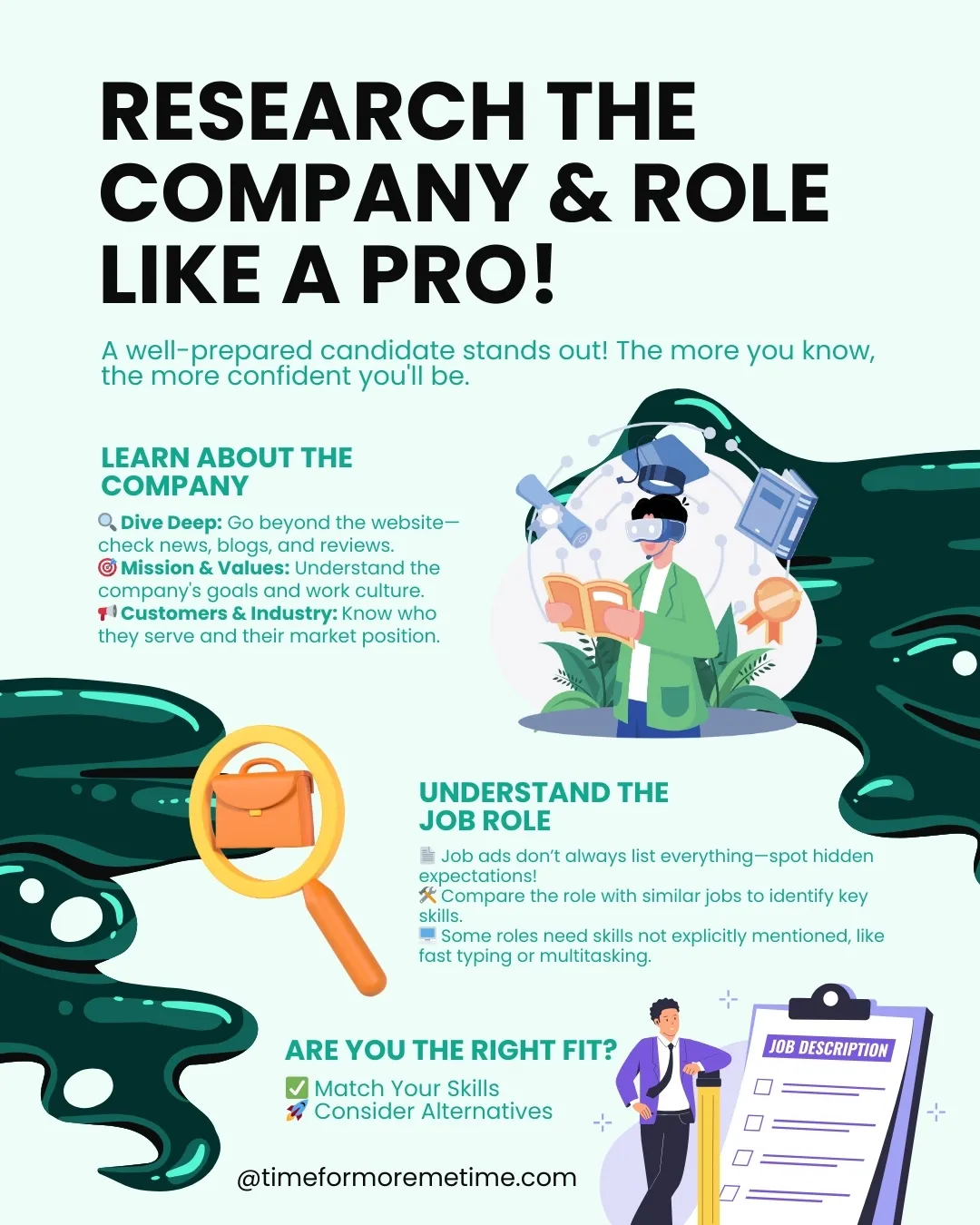
Hold on! Before you even think about going to the interview, some preparation is essential. The first step in your prep work for how to ace an interview is to thoroughly research the company you’re targeting and fully understand the job you’re applying for.
However, don’t just scratch the surface by noting how prestigious the company is in relation to its customers. Take the time to learn about its mission, values, and culture. Additionally, gather information from news articles and the company’s website to gain a well-rounded perspective.
The same goes for the job description. Don’t rely solely on what’s written in the advertisement. Investigate similar positions to gain a concrete understanding of what the role entails. Be sure to identify key responsibilities and required skills, and read between the lines.
Some companies may list specific skills they require, but they might expect more from candidates. For example, if they seek an office worker, they may prefer someone with strong typing skills, even if that isn’t explicitly mentioned in the job ad.
Finally, assess whether you are a strong match for both the company and the position you’re targeting. If you are, then lock on. If not, consider exploring alternatives like high-paying work-from-home jobs, which can offer more flexibility and better alignment with your skills and lifestyle.
2. Practice And Prepare Interview Questions
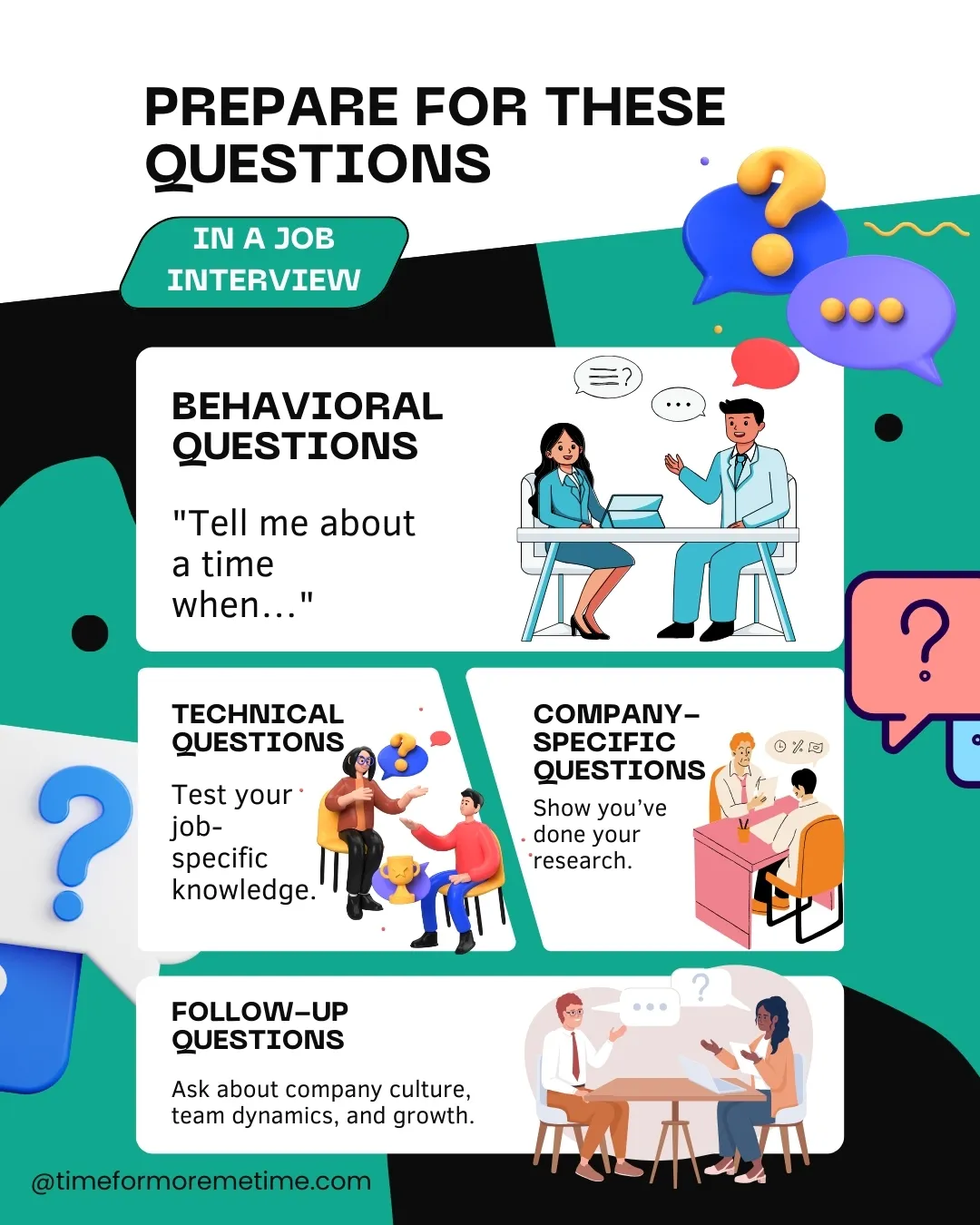
Alright, this is the traditional method of preparing for an interview. In a previous article, I mentioned that I practiced interviewing by participating in actual interviews!
I looked for job postings similar to the one I was targeting, applied, and went through the interview process. It’s one of the best ways to learn how to ace an interview. There have been times when I was offered a position (and I accepted the offer), but most of the time, I didn’t.
Getting interviewed in actual interview is excellent practice. If you don’t feel comfortable doing that, you can follow the traditional steps.
First, gather common behavioral questions from the web and practice answering them using the STAR method. The STAR method is a structured way to respond to hypothetical or practical interview questions, such as those that begin with “Give me an example of…” or “Tell me about a time when…”
Here’s how the structure works:
- Situation: Describe the context of the situation presented by the interviewer.
- Task: Clarify the specific tasks you needed to accomplish in that situation.
- Action: Detail the actions you took to complete the task.
- Result: Share the outcomes of your actions, how they relate to the task, and the overall conclusion of the situation.
In addition to behavioral questions, you’ll encounter technical questions related to the job role. These questions will gauge your skills, experience, and knowledge relevant to the position you’re applying for.
Another line of questioning may focus on whether you prepared for the interview. Some interviewers will assess this by asking about the information you know regarding the company and the job.
In some cases, this serves as an opportunity for you to demonstrate your interest. Ask follow-up questions about the company’s culture, dynamics, and growth opportunities.
Lastly, prepare some thoughtful questions that allow you to express your genuine interest in the role and the company. However, be careful not to overdo it, as you don’t want to come across as desperate. Your approach should remain professional without sounding overly eager.
3. Dress Appropriately And Arrive Early
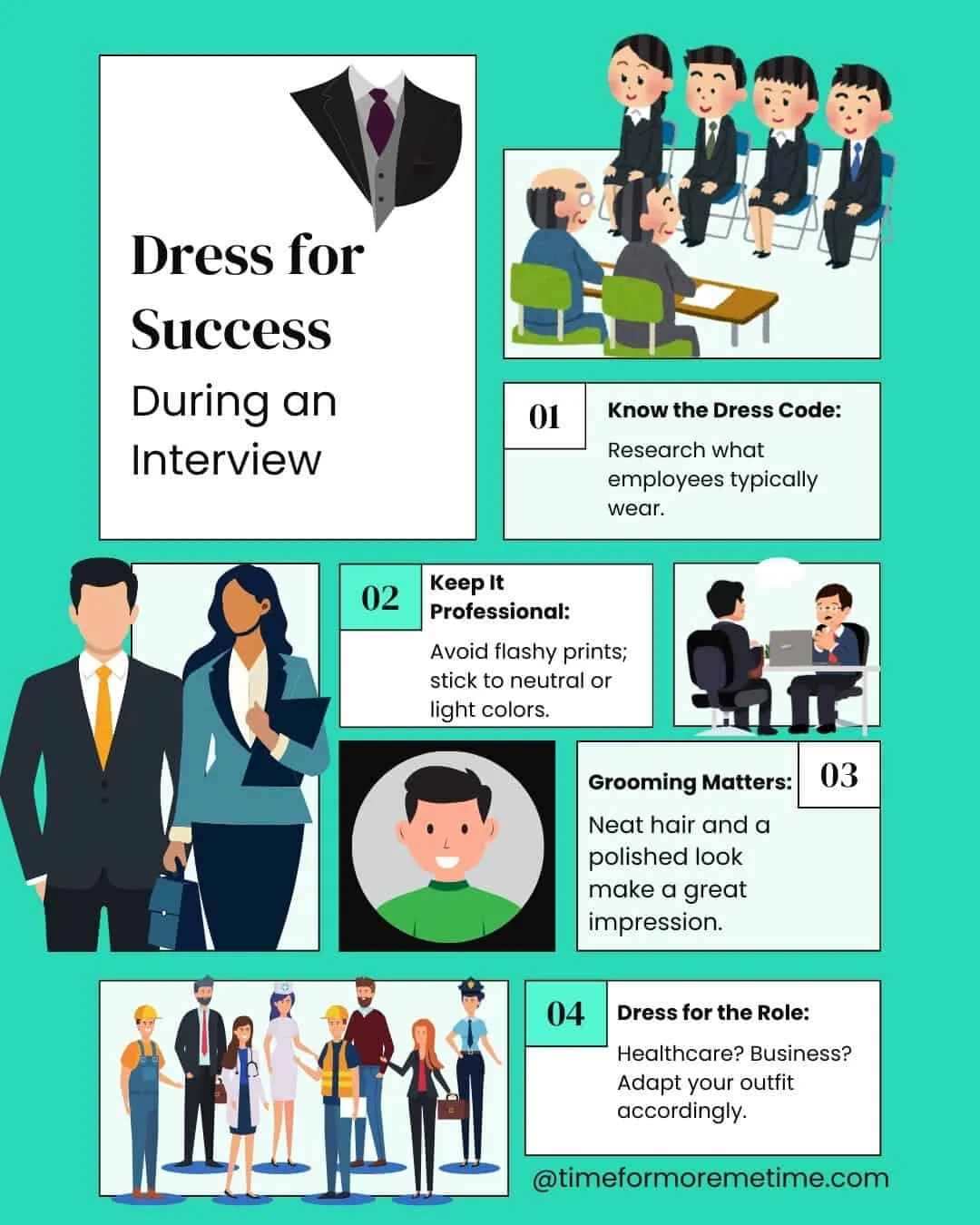
Nowadays, dressing appropriately for a job interview seems to be overlooked by many in the younger generation. I’ve noticed this in various workplaces, including my own in the healthcare industry.
While many applicants don’t look bad, they often appear out of place, and unfortunately, this can lead to not getting the job. I understand that we have the freedom of expression here in the United States, but there are situations where you need to conform to a certain standard.
It may seem superficial for hiring managers to focus on appearance rather than skills and character, but it’s a reality we must accept.
As an applicant, you have little influence over the company’s culture until you become part of it, so you need to conform with their norm to be accepted.
Now, let’s get to the point: know the company’s dress code and adapt to what their employees typically wear. For instance, if you’re applying at a hospital, make sure to wear clean, professional-looking clothes.
Avoid bold prints and opt for light, neutral colors. Additionally, ensure your hair is neat and well-groomed. If you can’t set aside your fashion preferences for just one or two hours for an interview, the hiring manager may question whether you’re the right fit for the organization.

Since you’re aiming to present your best self, punctuality is equally important. Arrive early—30 minutes to an hour before your interview time is ideal. And make sure you have everything in order before you leave the house.
Don’t forget to bring any required materials, such as copies of your resume, portfolio, or cover letter, even if they weren’t explicitly requested. It’s always better to be over-prepared. Additionally, ensure you have any other necessary documents ready to go.
4. Make A Strong First And Last Impression
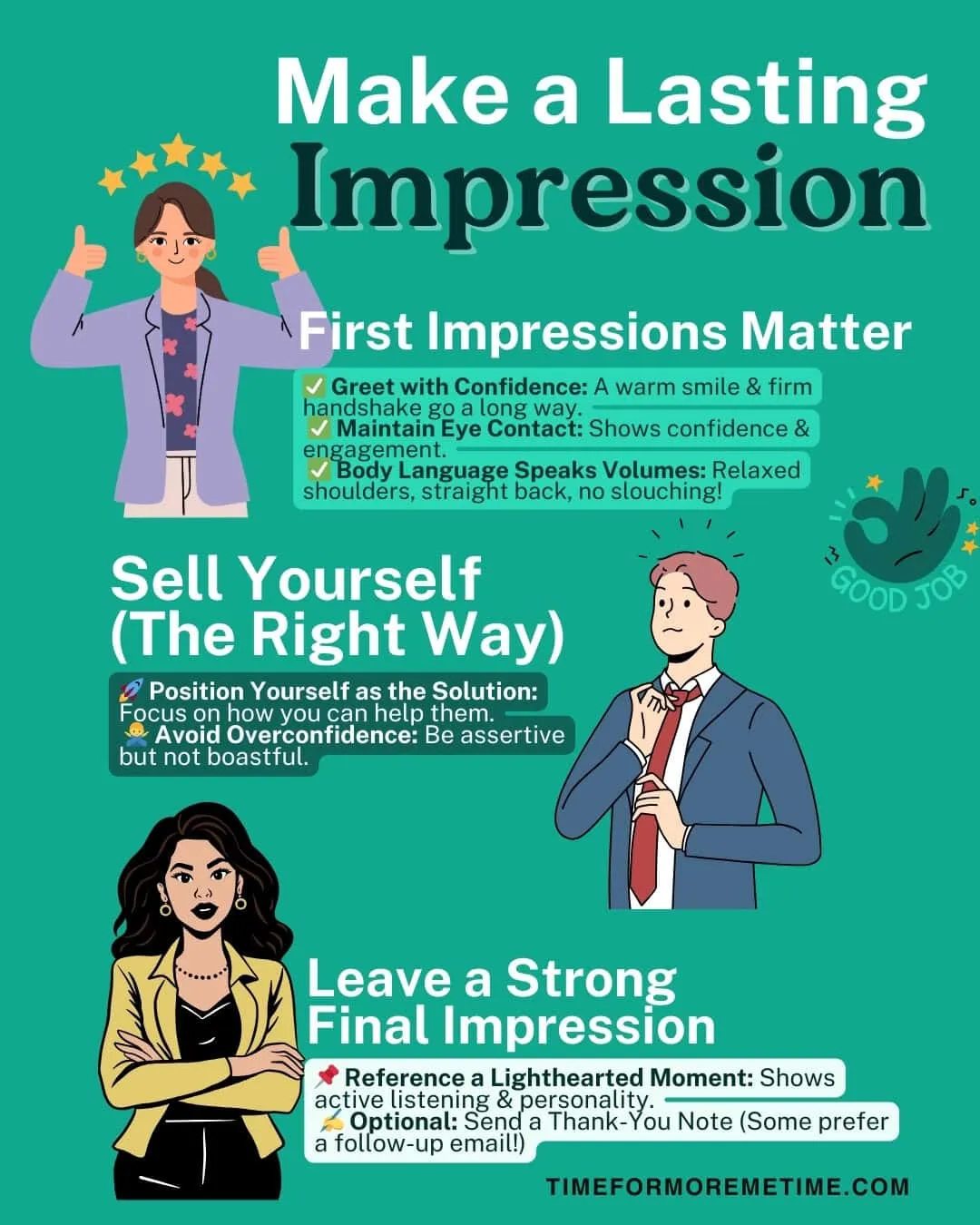
Now, it’s time for the actual interview. The most important aspect of how to ace an interview is making a strong first and last impression.
The first impression is crucial for engaging the interviewer, while the last impression ensures they remember you when considering other candidates.
One of the best ways to create a strong first impression is to be professional and polite. Be sure to greet the interviewer with a warm smile and a firm handshake. Practice this gesture so you don’t appear awkward or goofy when reaching out to shake hands.
While greeting the interviewer, maintain steady eye contact. Avoid letting your eyes wander; the only time you should look away is for a brief moment when you enter the room. After that, it’s time to put on your game face.
In addition to eye contact, exhibit confident and positive body language. Keep your shoulders relaxed, your back straight, and your face directed toward the interviewer.
Avoid slouching or appearing stiff; instead, aim to be comfortable while remaining engaged.
When the interview begins, you can expect many of the questions you’ve practiced to come up. While I’m not a fan of the typical interview questions, they’re frequently used by hiring managers, which gives you an advantage.
At this point, focus on selling yourself. However, avoid being boastful. Instead, position yourself as the solution to their needs. Refrain from overusing superlatives or making bold claims; instead, be modest and straightforward in your responses. This is a safe way for you to maintain your good first impression.
And lastly, make the best last impression. Some guides suggest that applicants do this by sending a thank-you note. Personally, I’ve never tried that approach. Instead, I prefer to reference something humorous that the interviewer mentioned during our conversation. This not only shows that I was actively listening but also highlights my sense of humor. It also totally releases all the tension buildup—a win-win tactic for me.
5. Engage And Communicate Effectively
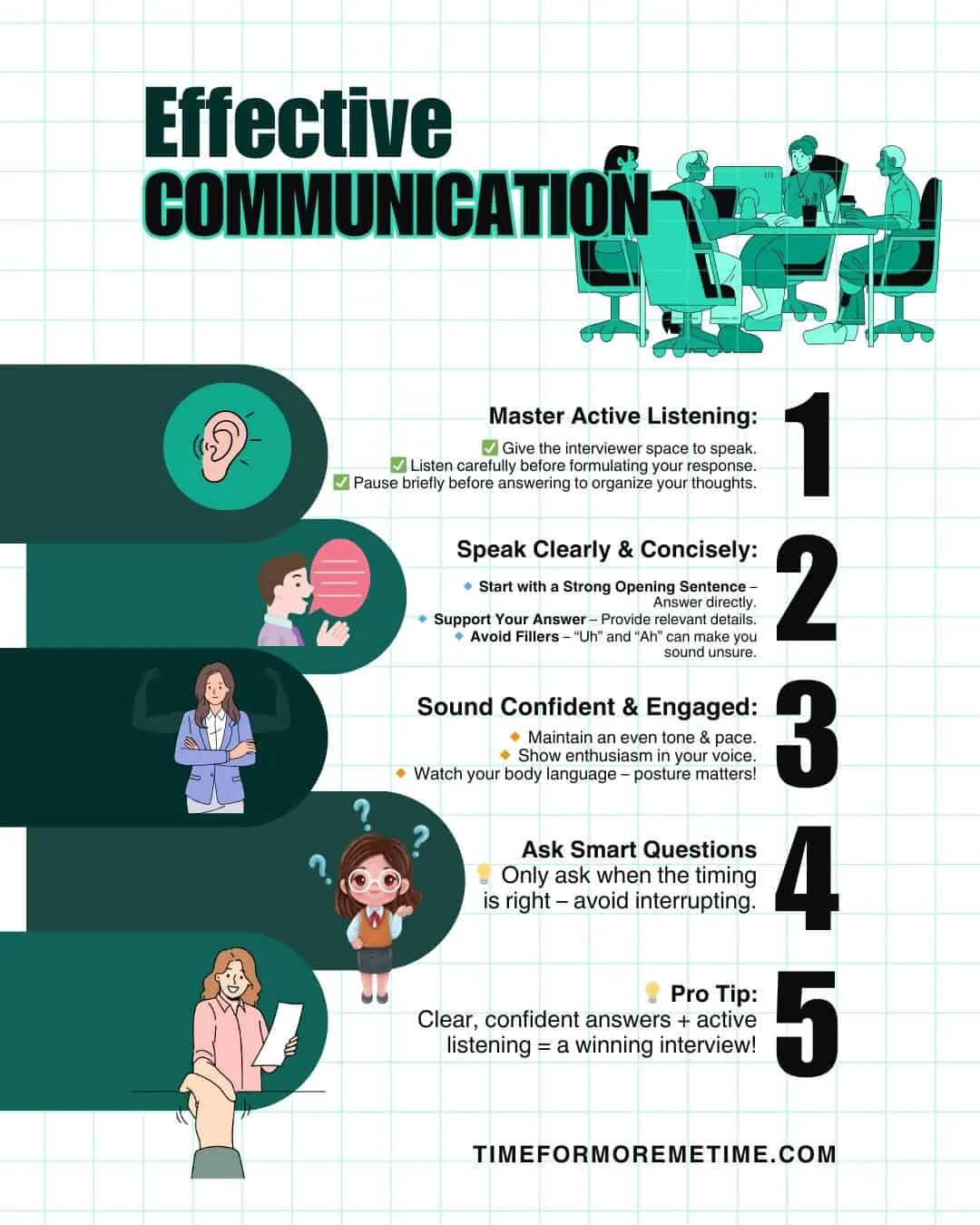
Do you think we’re done with the discussion on how to ace an interview? Not Not quite! There’s still plenty to cover.
We’ve established the importance of making strong first and last impressions, but now it’s time to dive into the essentials: engaging and communicating effectively.
One of the most valuable skills you can bring to an interview is active listening. Once the conversation starts, give the interviewer ample space to speak and listen closely to what they’re saying.
When asked a question, take a brief moment to pause before responding. This gives your brain time to fully process the question and formulate a thoughtful answer. When it’s your turn to respond, aim for clarity and conciseness.
A practical approach is to start with a straightforward sentence. For example, if you’re asked, “Where do you see yourself five years from now?” you might respond with, “I see myself working at this company five years from now.”
While this answer may seem boring, dense, and plain, it delivers clear and direct information. It serves as the main thesis of your response, allowing you to quickly communicate your point. Additionally, it provides a moment to gather your thoughts before elaborating further.
To make your explanation feel genuine and well-supported, ask yourself why you gave that initial answer. In this case, you could follow up with, “I can say this confidently based on what I’ve learned about your company.”
This approach is effective because it aligns with the interviewer’s natural thought process. When you provide a packed yet concise and clear answer, their immediate expectation is for you to elaborate or support your statement with relevant details.
On the other hand, many candidates struggle to answer questions effectively, which can make them appear unprepared or uncertain. Some fall back on filler words like “uh” or “ah,” while others repeat the question back to the interviewer. Although repeating the question can sometimes be a valid tactic, it often comes across as unprofessional and wastes valuable time.
It’s also essential to remember that the interviewer isn’t just listening to your words; they’re also evaluating your tone, pace, and confidence. So, as you respond, ensure your voice conveys enthusiasm and genuine interest.
Also, remember that you’re allowed to ask questions, too. However, be mindful of the interviewer’s demeanor before doing so. If they seem rushed or agitated, it’s wise to hold off on your questions until a more appropriate moment.
6. Follow Up And Reflect
Once the interview is over, the next step in how to ace an interview is to follow up and reflect.
It’s standard to wait at least one to two weeks before following up. A follow-up is essentially about expressing your gratitude for the opportunity and politely inquiring about the status of your application.
Sending a follow-up email or SMS is generally preferred, but a phone call is acceptable if no other options are available.
If you don’t get the job, take time to reflect on the interview and identify areas for improvement. Assess what went well and what could be enhanced for future interviews. After that, it’s time to go through the entire process all over again, but with more insight and preparation.
FAQs
Got some questions? I’ve got you covered!
How do I handle a panel interview with multiple interviewers?
First, don’t panic. Even if there are multiple interviewers, they won’t all talk at once. Focus on the person who asked the question, maintain eye contact, and direct your answer to them.
Once you’re done answering, glance at the other panel members to acknowledge them and wait for any follow-ups. Stay composed and treat it like a conversation, just with a slightly larger audience.
What if I make a mistake during my answer?
It happens! The key is to handle it smoothly without panicking.
- If the atmosphere is lighthearted, laugh it off and correct yourself.
- If the interview is more formal, simply acknowledge the mistake, correct it, and move on.
- If there’s noticeable tension, a quick and professional “Sorry about that” will do—then continue confidently.
The worst thing you can do is spiral into panic or ramble in an attempt to fix everything. Stay composed and keep the conversation flowing.
How long should my answers be in an interview?
Keep your responses concise but informative—ideally between 30 seconds and two minutes, depending on the question’s complexity.
That said, take your time when necessary. If you hit the one- or two-minute mark, pause, take a breath, and allow the interviewer to guide the conversation. This prevents you from rambling and gives them a chance to ask follow-up questions.
Conclusion
There you have it! These are fundamental steps on how to ace an interview. They sound simple, right? Well, they’re supposed to be! And trust me, they’ve been a lifesaver for me, even when I was swamped with work!
Remember: An interview isn’t rocket science—it’s just a conversation with another person. While some people—myself included—compare it to selling a product to a customer, it’s a bit more nuanced.
Unlike traditional sales, an interview is like selling with one foot already in the door. The interviewer or hiring manager is already interested in you—that’s why they invited you in the first place.
Your job is to prove to them that interviewing and considering you for the role was the right decision. Show them that you’re the best candidate without coming across as arrogant.
Make them feel it. Prove it. Stand out.
Makes sense, right? Anyway, this is just part of my unofficial series on job hunting. If you want more insights on this topic, be sure to follow my website, social media, and YouTube channel.
Good luck!
Sources
- Photo: Unsplash: Mina Rad






